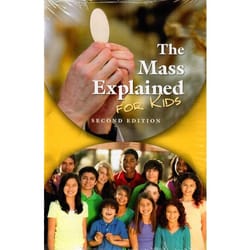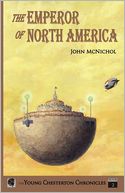We just started week 5, thought I’d give a little report on how things are going. Re-cap: This is our first year using Kolbe. 6th and 4th grader are enrolled, and mostly following the plan with a couple substitutions. 2nd grader and kindergartener continue to do the home-grown, relaxed-schooling thing.
Overall Impression: Very happy with the decision. On a day like today (evil dictator felled by an evil-er cold), wow it is SO MUCH BETTER having the plans ready-to-go. Oh I know, it is so easy to make your own course plans. Oh, I know, it only takes a few minutes to type them up each week. But wow, being able to growl at a child and say, “Where are you in your homework?” is even easier.
–> Without ready-made, day-by-day plans, two big kids would definitely still be on the relaxed-schooling plan, which I really love for the little guys, but is not the ideal choice for our older kids. Way too many disruptions in the school year so far (exhibit A: evil dictator with evil cold), no way I could have held together a formal curriculum if it relied 100% on my willpower alone.
Some comments on specific subjects:
Latin: Mr. Boy is doing the first year of New Missal Latin. I like it pretty well. Like the kolbe-published supplemental resources. Will say this: In my opinion, the teaching parent needs to either have a smattering of Latin under the belt, or be ready to learn-along. Having already done the intro to classical Latin in previous years, these first few weeks have been largely review for Boy & myself, and yes that is very nice. Now is not my time to be learning a new language. No really. Sometimes it is not that time.
(Remind me also I have some other comments on this particular Latin program and the pro’s and con’s. For a post another day.)
Grammar: No shock here, I’m one of ten people in the known universe who actually likes Voyages in English. So far, no difficulties. Definitely if you haven’t diagrammed sentences before, you want the intro to diagramming booklet as a supplement.
Composition: I failed to observe that there is a separate composition book for 6th grade in addition to the vocabulary and grammar books. Kolbe plans call for one assignment a week from that book. I’d already maxed out the book budget. So I typed up 36 composition assignments for the Boy, and stuck those in his plan book. Conveniently, 6th graders do not use the composition portion of VOE, so I borrowed from there.
Spelling / Vocabulary: The kids hate this. Lot of work. I keep reminding them that a good PSAT / SAT score is worth cold hard cash. They get that. We’ve used Spelling Power in the past, and have good results with using that study method for studying the words missed on the pre-test. The whole amount of Kolbe-assigned words is a lot, though. And we’ve had a couple weeks with enough disruptions that I couldn’t keep up my end on this one through the whole week. We just move on to the next week, rather than piling up.
Word Study: Oh, yeah, and word study. Gee these children get a LOT of language arts. They tell me this one is easy (MCP Plaid). It is also good for them. Happy there. Decided this was one workbook the kids could write their answers in, would be a royal pain to have to do the assignments on a separate page.
Geography: Lovin’ the geography books. Short, easy assignments, genuinely useful map skills. Makes me happy.
Religion: Of course I like it (Faith & Life), I was already using it anyway. This is the other activity book I let the kids write in. Pretty happy with the addition of the St. J’s Balt. Catechisms as well, serious retro power going on there. My DRE also likes the program. She’s experimenting with one section of F&L for 8th grade CCD this year. (Rest of us are using our same Loyola Press books from previous years. Which are fine. But I’d still make my kids do F&L at home.)
Science: Not a demanding program, which works for me. We skip the Monday “investigation” every week, so far there hasn’t been one worth the hassle. Also, I have the workbooks but the course plans don’t call for them, and both kids have decided we are happier not doing them. I’m good with having them do just the textbook reading and review questions, and they can unschool any other science they desire. I like that balance. [Recall: Two real microscopes in my living room. Engineer at the dinner table every night. Unschooling science is a viable option.]
Literature: Um, where are the study questions? Apparently they are in some other place than the course plans. I guess a Kolbe booklet I was supposed to buy? For the uninitiated: You acquire the book you are studying — White Fang and Misty of Chincoteague to start, for us — and then the course plans give you chapter reading assignments and a weekly short essay to write, book report at the end. And those plans also mention these “study questions” and “vocabulary” and stuff. But they aren’t in the plans. And no, I can’t be bothered to go look back at the Kolbe catalog, nor to post a question on the Kolbe forums. Because, um, my magic pen of you-don’t-have-to-do-this works great! I just cross out assignments! We love it!
–> As a result: I let the girl take her final exam open-book and open-dictionary (Misty only takes 5 weeks), since it would be requiring her to have memorized study questions she’d never seen. Flipped around the final week course plans to have her do the exam first and write the book report second.
Math: Not using Saxon. Nothing against it. We’re just still happy with Math-U-See, didn’t see a reason to switch when that was already working.
History: Recall everyone’s doing Rome this year, which would ordinarily be the 5th grade course. Very happy both with using the program as written for Mr. Boy, and subbing in History Pockets for the first two quarters for the girl. Not much else to say. The Kolbe-recommended course is very good. And one of my children really needed to meet Ancient Rome in a perkier manner.
[But yes, I had to pick up a library book on the Aztecs, because HP fails to mention the, er, human sacrifice, those amazing wonderful ancient Aztecs were practicing during the European renaissance. Yeah, I’m a western culture snob. Facts are facts. I vote for the no-live-beating-human-hearts-in-the-hands-of-the-priest every time. Give me self-flagellating, slightly sore-backed penitents over flayed-alive sacrificial victims any day.]
Funny story though: We’re planning to go see our local Roman legion when they gather not so far from us in November. Except the girls only want to go if they get to dress up. So a certain growing 4th grader is going to be let loose with some discount linen between now and then. Luckily the rest of us already own passable garb that still fits.











